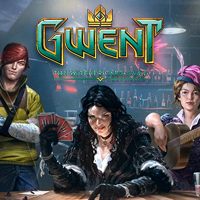Creating Decks
Last update:
A deck in Gwent consists of a minimum of 25 cards up to the maximum of 40 cards. One might think that there is nothing special about it but that's totally wrong! Creating your custom deck is very challenging and strategically demanding task. In Gwent, players have a myriad of cards at their disposal. Even if one wanted to play only the most powerful ones, it's unfortunately impossible because of certain limitations. Creating deck can be divided into several stages.
Stage 1: Choosing a Faction

First, you have to decide what Faction you want to play. You can choose between:
- Monsters
- Northern Kingdoms
- Scoia'Tael
- Skellige
- Nilfgaard
More information on Factions can be found in the last chapter of this guide, which is devoted to this topic. Having made the choice, you will also have to choose one of your Leader cards. Every one of them has a unique skill that you can adjust to your own playstyle.
Stage 2: Choosing the right cards

For the purposes of this guide, the selected Faction is Skellige with the King Bran as the Leader. His special power lets the player Discard any 3 cards from the deck to the graveyard. A deck, as mentioned before, can consist of a minimum of 25 cards up to the maximum of 40 cards. You also have to consider that although 40 cards may include more of the important units or Event cards, but, at the same time, it reduces the chance to draw the most interesting ones during a match. It is assumed that 25 cards is the most optimal amount that makes it possible to implement any strategy. You can place melee, ranged, and siege units as well as Event cards in your deck. However, there are some limitations, namely:
- You can have only up to 4 Gold cards in a deck;
- The amount of Silver cards cannot be higher than 6;
- You have to have at least 15 Bronze cards (to complement the deck to 25 cards).
While creating a deck, you have to consider what decks you'll be fighting. You have to choose cards that will allow you to eliminate enemy threats as well as units that will increase the total combat strength of your deck.
Stage 3: Finishing the deck creation

The above deck is composed of 25 cards, 6 of which are Silver, 4 are Gold, and the rest are Bronze. It uses the units that can be Discarded with the Leader's special ability (Queensguard, Cerys) and then restored to the board with a single card. What's more, the deck includes units that allow the player to Resurrect cards from the graveyard, such as Priestesses of Freya. Also, there is no shortage of cards that let you neutralize enemy units, like Alzur's Thunder, Geralt: Igni, and Clan Drummond Shieldmaidens. During a match, Bears, which damage all enemy units that will appear on the board by 1 point (except for Gold ones), also prove very useful. A well thought out deck is the key to success, so when you're creating one, try to think your strategy through and choose cards that have synergies, which means that if you play one card, you can trigger an additional effect of another one.
You are not permitted to copy any image, text or info from this page. This site is not associated with and/or endorsed by the or CD Projekt RED. All logos and images are copyrighted by their respective owners.
Copyright © 2000 - 2025 Webedia Polska SA for gamepressure.com, unofficial game guides, walkthroughs, secrets, game tips, maps & strategies for top games.
